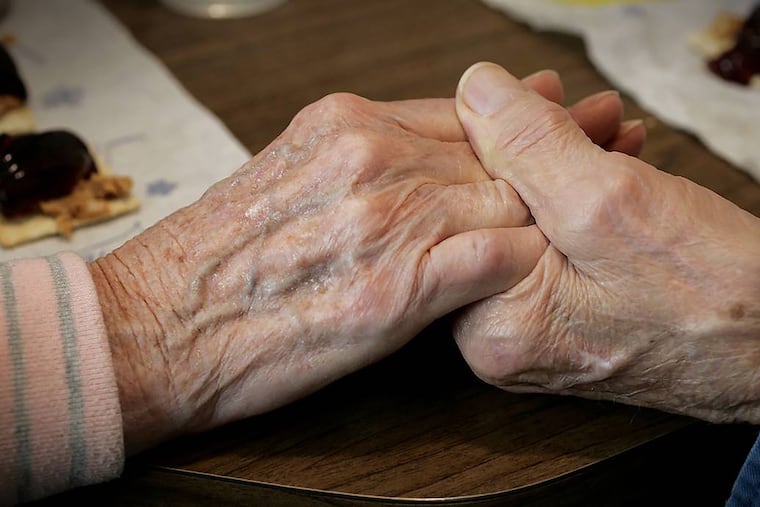The senior living industry is on the verge of crisis
How can we support the aging poor?

We are reaching a critical crossroads in the United States when it comes to senior living and eldercare. I am one of about 73 million baby boomers. We represent over 20% of the U.S. population. Among us are 14 million people who are currently receiving some form of long-term care. That number will double by 2050, according to estimates from the U.S. Centers for Medicare and Medicaid Services.
Our current eldercare infrastructure is woefully insufficient to accommodate the vast medical needs of the population boom. To cite just one example, last year the American Health Care Association’s survey found that 73% of nursing homes are concerned about having to close due to staffing shortages.
Aging boomers are unprepared for the significant financial costs of staying alive and well. Families are struggling to manage the medical needs of older parents or grandparents, both from a financial and a caregiver standpoint. And these financial challenges are only magnified for the poor. According to research from the Insured Retirement Institute, 45% of boomers have no retirement savings and more than a quarter of those who do have less than $100,000.
In Philadelphia, there are 311,901 baby boomers, and 21.8% of them live below the poverty line. The median monthly cost for a private unit in an assisted living community is $4,500, according to SeniorLiving.org. That’s $54,000 annually to live in safety and security.
In our youth-obsessed culture, the elderly are often a forgotten population. We can and must do more to ensure that our elders — regardless of socioeconomic status — are allowed to age with dignity and without fear that even their most basic of medical needs will go untended.
I devoted my 39-year career at Merck to leading talented teams dedicated to saving and improving the lives of people around the world. The length of my tenure is perhaps unheard of today and due in large part to the company remaining true to founder George Merck’s commitment: to get our medicines to the people who need them most.
The elderly who need us most are those without the resources to age with security. For people of means, their “upscale” eldercare facilities are more like country clubs. They offer residents ample opportunities to socialize, have fun, and integrate into the greater community. They have a sophisticated technology infrastructure for residents and caregivers that enables staff to provide immediate, proactive care before emerging medical issues become life-threatening.
Why should the poor not deserve the same? And why aren’t we as a society standing up for the well-being of the poorest among us? Sixty percent of senior housing is more than 20 years old, according to NIC MAP Data Service. A growing number of eldercare facilities are out of code and in need of repairs and upgrades to remain safe and provide for the most basic of human needs. In the past seven years, more than 1,000 senior homes have been shut down because their facilities were simply too expensive to maintain. I wonder, where did those elderly Americans go?
Not unlike many eldercare facilities, the Little Sisters of the Poor’s Holy Family Home faced the same fate after 50 years of service in the Kingsessing neighborhood of Southwest Philadelphia. The sisters were offered the opportunity to move to a new home in a suburban Main Line location. They immediately dismissed the idea, as it would take them away from the poor to whom they are devoted. Instead, the sisters embarked on a $45 million project to repair and renovate their home.
My wife Angie and I were moved to cochair this fundraising effort after our visit three years ago, where we witnessed the love and joy present among the residents, the sisters, and the staff who are employed from the immediate neighborhood. We expected to tour a facility, and instead, we met a family.
I suspect most people don’t know about the Little Sisters of the Poor. The only criterion for admission is to be below the poverty threshold. The Little Sisters’ model of eldercare should be the lodestar to which for-profit senior living management companies and the health-care industry aspire. The elderly poor are just as deserving as all of us of receiving the highest quality of care. They are no less worthy of living in a safe, clean, and loving home that values and celebrates each resident’s humanity as they journey through the final phase of life.
After all, the elderly are us. They just got there a few years ahead of us, and the poorest among them need us all to stand up for them. Mark Twain once said, “Do not complain about growing old. It is a privilege denied to many.” It is time to heed Twain’s words and the sisters’ example for some of the most vulnerable members of our society.
Dick Clark is the former chairman and CEO of Merck and cochair of the Little Sisters of the Poor’s Building to Serve in Love Campaign executive committee.